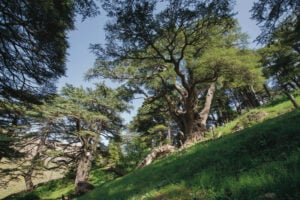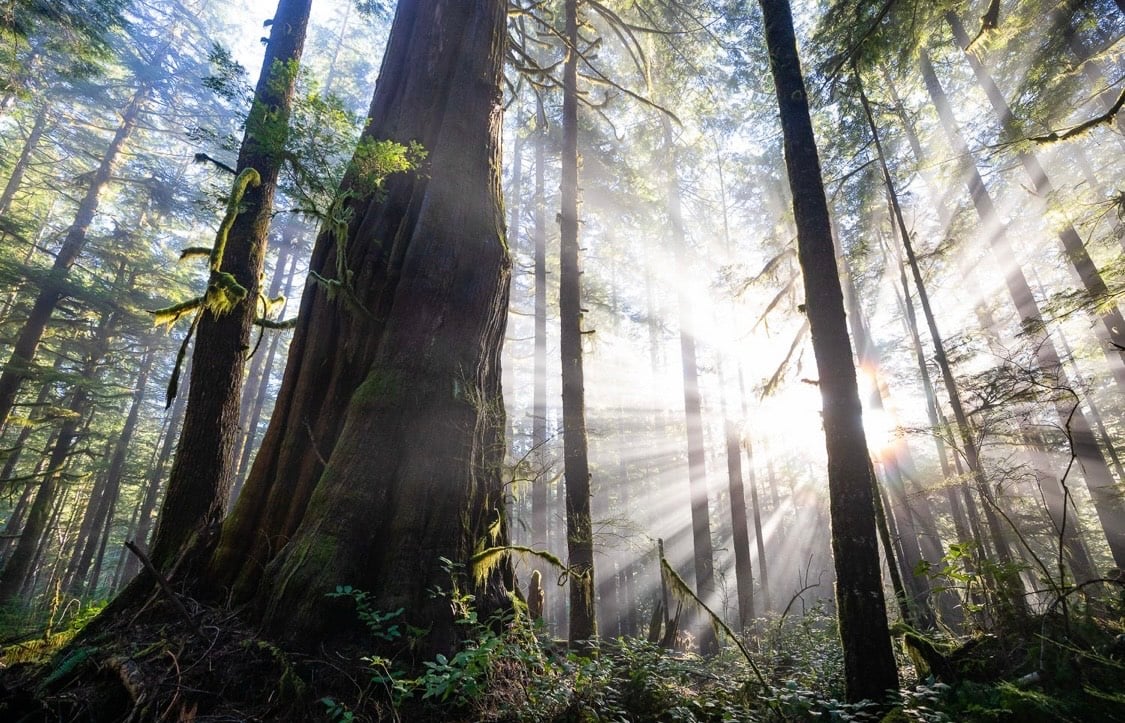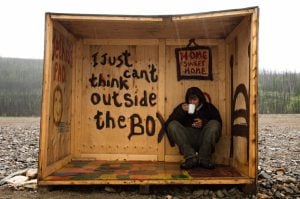
Environment
The importance of forests for our survival
An in-depth look at how trees work to keep us alive and the value of old-growth forests
- 2431 words
- 10 minutes
Environment
Conservation photographer TJ Watt advocates for the protection of old-growth ecosystems by documenting the loss of giant trees
For hundreds of years, British Columbia’s old-growth forests have stood as markers of time; storing carbon, supporting biodiversity, providing habitat and performing other ecosystem services. But intensive logging is quickly decimating these ancient forests, leaving stumps, clearings and young forests where giants once grew.
In an effort to highlight the incredible grandeur of old-growth ecosystems and draw attention to their unfortunate destruction, Victoria-based conservation photographer TJ Watt has spent years seeking out and documenting the province’s biggest trees — then returning later to photograph their stumps.
“I’m trying to remind people that unless we speak up and advocate for the permanent protection of old-growth ecosystems, we will continue losing ecosystems which are second only to the redwoods of California,” says Watt, who is the co-founder of and a campaigner with the Ancient Forest Alliance (AFA). In addition to advocating for the protection of existing old-growth forests, AFA wants to see replanted forests given more time to grow before being logged again.
Old-growth forest ecosystems contain many features that second-growth or replanted forests lack, such as multi-layered canopies and habitats for certain species. Currently, second-growth forests are logged after 55 to 80 years — not enough time for them to regain the beneficial characteristics of old-growth forests.
“These trees take many centuries to grow, and nobody’s waiting around for them to come back again,” says Watt.
In 2021, Watt received a grant from the Trebek Initiative, which supports emerging storytellers, researchers, conservationists and educators. He is using the grant to create additional before and after images. After identifying at-risk forests, Watt locates the largest trees and photographs them, often positioning himself beside the trees for scale. After logging takes place, Watt returns to the area to document the stumps that remain where these ancient trees once stood. Displayed side by side, the images are a powerful statement on the finality of old-growth logging.
“It’s up to us to ensure [ancient forests] are protected and I encourage people to safely get out there and explore the landscape themselves and reconnect with nature and see what they might find,” says Watt.






Environment
An in-depth look at how trees work to keep us alive and the value of old-growth forests

Travel
An insider’s account of the modern-day gold rush

Environment
David Boyd, a Canadian environmental lawyer and UN Special Rapporteur on Human Rights and the Environment, reveals how recognizing the human right to a healthy environment can spur positive action for the planet

Environment
How a niche British Columbia-based community is working to bring attention to the importance of old-growth forests